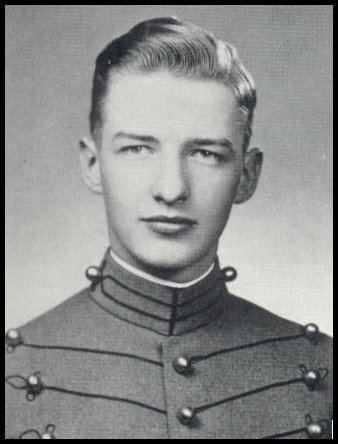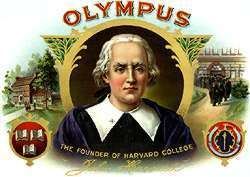Name Nathaniel Eaton | Siblings Theophilus Eaton | |
 | ||
Education | ||
The moth presents nathaniel eaton surviving my survivor audition
Nathaniel Eaton (1609–1674) was the first schoolmaster of Harvard College in Cambridge, Massachusetts, and later became a clergyman.
Contents
- The moth presents nathaniel eaton surviving my survivor audition
- Nathaniel eaton going too far
- Biography
- Religious convictions
- Another Nathaniel Eaton
- References

Nathaniel eaton going too far
Biography
The sixth son of Rev. Richard Eaton (1565–1616) and Elizabeth [Okell?]. Nathaniel was baptized in Great Budworth, Cheshire, September 17, 1609. He was educated at Westminster Schooland went on to Trinity College, Cambridge, where he was a contemporary and good friend of John Harvard who at the time was a student at Emmanuel College, Cambridge. Eaton later attended the University of Franeker, where he studied under Rev. William Ames. He emigrated to New England on the Hector landing in Boston June 26, 1637 in a party including his older brothers, Theophilus and Samuel along with Rev. John Davenport. In the fall of 1637 he was appointed the first "professor" of the nascent Harvard College. He erected Harvard's first building, planted its first apple orchard, established the colony's first printing press in March 1639, and created its first semi-public library.
Around the time that Eaton started teaching at Harvard, an Antinomian controversy had erupted in the Massachusetts Bay Colony. The governor at the time, John Winthrop, was well-noted for his extreme stance within the Puritan community and was greatly feared by many of the colonists. Even those who were Winthrop's close allies, such as Rev. Thomas Hooker, who cofounded the colony of Connecticut, were repulsed by his personality. As such, many left the colony and any Antinomians who didn't leave voluntarily were forced out, banished, or excommunicated (such as Rev. John Wheelwright who founded Exeter, New Hampshire, and his sister-in-law, Anne (Marbury) Hutchinson, who founded a new colony in what later became Rhode Island).
Eaton's older brother, Gov. Theophilus Eaton, emigrated to New England with other Puritans, which must have included Nathaniel and their brother Samuel, in the ship Hector, arriving in Boston on June 26, 1637. His group of colonists had John Davenport as their religious leader, and they wanted to start their own settlement – probably due in part to the commanding persona of John Winthrop, Governor of the Massachusetts Bay Colony at the time (1637 to 1640, and many other terms). Winthrop was termed "an object of great fear in all the colonies," and caused the Rev. Thomas Hooker and others to go off and form their own colonies as well. Deciding that he didn't want to be involved in the animosity, he – like Rev. Thomas Hooker before him – founded a new colony, the colony of New Haven, though Winthrop and others literally begged both of them to stay.
In 1639, the year after Theophilus left, Eaton was fired from his job following allegations that he had beat one of his students too harshly and that his wife had supposedly served students hasty pudding with goat dung in it.[1] Eaton's trial gave rise to the concept of court reporters. After the Church of Cambridge attempted an appeal on his behalf, Governor Winthrop refused them, saying that enough evidence had already been presented by several witnesses. The church, however, was able to secure a promise that all subsequent trials would be accompanied by a recording of facts so that defendants and plaintiffs could refer to evidence already presented without witnesses having to go through the entire process again.[2] The only record of Eaton's own supposed "confession" was destroyed in a suspicious fire in the office of the famous historian, James Savage, and his guilt remains in doubt.
Henry Dunster succeeded Eaton in 1640 as Harvard's first president, and the first students graduated in 1642.[3] Interestingly, Dunster also found himself confronting the students, albeit in a sterner fashion, actually having to whip two of them publicly for abusing one of the citizens of Cambridge. However, the students finally triumphed in the situation,[4] and Dunster himself resigned in 1654 over disagreements with the church about infant baptism.
At around the same time that Eaton was dismissed from Harvard, he apparently was also excommunicated from the congregation in Cambridge. He moved to Virginia in 1640 and then sent for his wife and children who left New England, except for Benoni. According to Winthrop in his History of New England [5] (known to be full of inaccuracies), the ship in which the family traveled disappeared without a trace. Benoni Eaton, left in Cambridge, was taken in by Thomas Chesholm and his wife, Isobel; Thomas was steward of Harvard College from 1650 to 1660. Through Benoni, Nathaniel has a large number of modern descendants.
Following the loss of his family, Eaton married the widow Anne (Graves) Cotton [6] (1620–1684), the daughter of Captain Thomas Graves (1584–1635) of Virginia, and served for several years as an assistant to the Anglican curate at Accomac, Virginia before returning to England, where he was appointed the Vicar of Bishop's Castle, Salop, in 1661 and Rector of Bideford, Devon, in 1669.
In 1647 Eaton was finally "exonerated" of a £100 debt that Winthrop misstated as being for £1,000 in his History of New England, ibid, and with which Eaton had supposedly absconded to Virginia in 1640. The exoneration is documented in Henry Dunster's record book for Harvard College as a copy of a letter by two benefactors that Dunster recorded directly underneath his first design of the seal of Harvard College. The 1640 endowment letter was footnoted in 1647 by Theophilus, who wrote:
Clearly, the intention of the footnote was to indicate that his brother had finally been repaid, and apparently Nathaniel had in part used the money to further his education as he did receive a doctorate (a Ph.D. and an M.D.) from the University of Padua in that same year. As for the £100, Thomas Symonds – a carpenter who had apparently assisted in the building of the college at Cambridge in 1639 and afterwards – was soon found to be in debt to one of the creditors of the college, John Cogan, for exactly the same amount. As stated elsewhere, the college building itself was poorly erected – Symonds being the responsible party after Nathaniel left – and eventually Symonds and at least one of his assistants were thrown into debtor's prison.
Religious convictions
Nathaniel Eaton's troubles seemed to mount, however, after he graduated from the Jesuit Missionary University. Thus, he left for England around 1652, where he had already been accepted back by the Church of England and honored as both a vicar and rector (cf. supra), though obviously he had his scruples, and was said to waver back and forth between devotions to his newly found home and that of his former, which he could never return to.
In all likelihood, that "back and forthedness" and covering up set up a scenario of confusion, which seems to have also confused every recordkeeper involved. Ironically, Eaton died in 1674 in King's Bench Prison, where he had been incarcerated for a similar debt: quite probably the same £100 debt from which he had already been given relief. Also, his imprisonment coincided with the restoration of the Stuart Throne, and was likely reposted on an old list that King Charles II's father had kept concerning those of lingering or questionable indebtedness.
Another Nathaniel Eaton?
There was also Nathaniel (H)Eaton, wife, Elizabeth and children, who emigrated on the Griffin with William and Anne (Marbury) Hutchinson landing on September 18, 1634 in the town of Boston, but who spelled his name "Heaton". Some other modern sources on Heaton, such as the Thwing Collection [note 87], erroneously conflate Heaton with Rev. Nathaniel Eaton.
